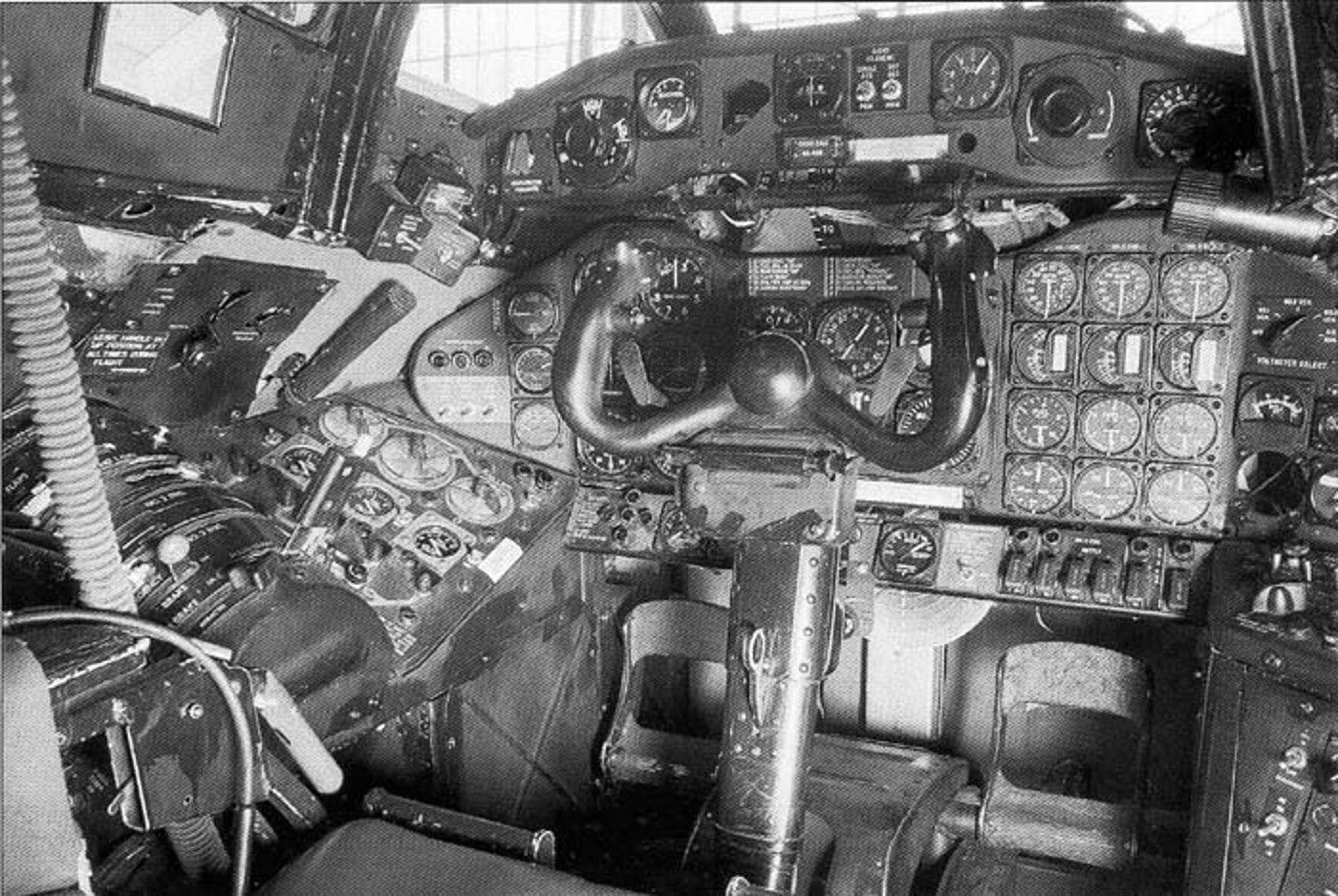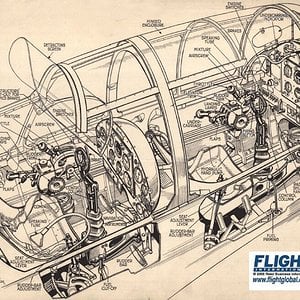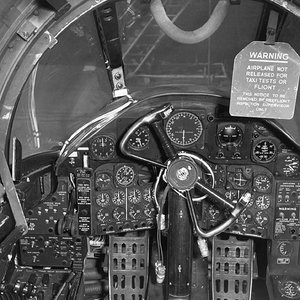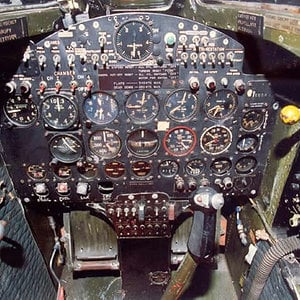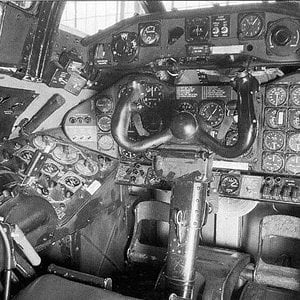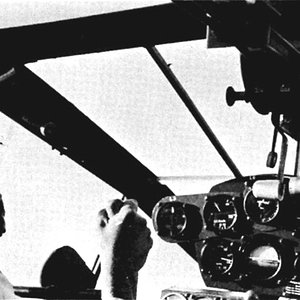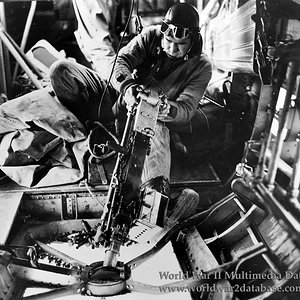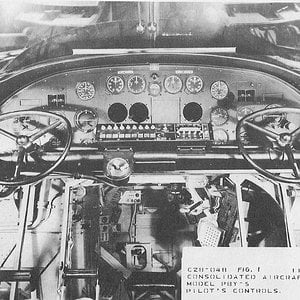Navigation
Install the app
How to install the app on iOS
Follow along with the video below to see how to install our site as a web app on your home screen.
Note: This feature may not be available in some browsers.
More options
You are using an out of date browser. It may not display this or other websites correctly.
You should upgrade or use an alternative browser.
You should upgrade or use an alternative browser.
Design and development
Both prototypes taking off in formation
Testing RATOThe resulting unorthodox design, first flying on 28 October 1949, was (unusually for a combat aircraft) fitted with three engines, General Electric J47s in this case: one at the extreme tail with an intake at the base of the tailfin, and two underneath the forward fuselage in pods.[2] The innovative wings, swept at 35° and with 6° anhedral, were equipped with variable incidence, leading-edge slots, full-width flaps and spoilers instead of ailerons. The combination of variable incidence adjustment and slotted flaps allowed for a shorter takeoff run.[3] Four 954 lb (4.24 kN) thrust Rocket-Assisted Take Off (RATO) bottles with a 14-second burn duration could be fitted to the rear fuselage to further improve takeoff performance. Spectacular launches were a feature of later test flights.[2]
The main landing gear consisted of dual sets of wheels in tandem in the fuselage, similar to the B-47 Stratojet, with outrigger wheels at the wingtips (originally proved on a modified B-26 Marauder named "Middle River Stump Jumper"[2]). The B-51 was a large but aerodynamically "clean" design which incorporated nearly all major systems internally.[3] The aircraft was fitted with a rotating bomb bay, a Martin trademark; bombs could also be carried externally up to a maximum load of 10,400 lb (4,700 kg), although the specified basic mission only required a 4,000 lb (1,814 kg) bombload. Eight 20 mm (.79 in) cannons mounted in the nose would have been installed in production aircraft.[3]
Crew provision was for a pilot under a "fighter"-type bubble canopy and a SHORAN (short-range navigation and bombing system) operator/navigator in a compartment located lower than and to the rear of the cockpit (only a small observation window was provided).[3] Both crew members were provided with a pressurized, air-conditioned environment, equipped with upward-firing ejection seats.[3] The XB-51 was the first Martin aircraft equipped with ejection seats; the ejection seats being of their own design.[
Specifications (XB-51)General characteristics
Crew: 2
Length: 85 ft 1 in (25.9 m)
Wingspan: 53 ft 1 in (16.2 m)
Height: 17 ft 4 in (5.3 m)
Wing area: 548 ft² (50.9 m²)
Empty weight: 29,584 lb (13,419 kg)
Loaded weight: 55,923 lb (25,366 kg)
Max takeoff weight: 62,457 lb (28,330 kg)
Powerplant: 3 × General Electric J47-GE-13 turbojets
Performance
Maximum speed: 645 mph (1,040 km/h)
Range: 1,075 mi (1,730 km)
Ferry range: 1,613 mi (2,596 km)
Service ceiling: 40,500 ft (12,300 m)
Rate of climb: 6,980 ft/min (35.5 m/s)
Wing loading: 102 lb/ft² (498 kg/m²)
Thrust/weight: 0.28
Armament
Guns: 8 × 20 mm (0.79 in) cannon with 1,280 rounds
Rockets: 8 × High Velocity Aerial Rockets (HVAR)
Bombs: 2,000 (907 kg)
Both prototypes taking off in formation
Testing RATOThe resulting unorthodox design, first flying on 28 October 1949, was (unusually for a combat aircraft) fitted with three engines, General Electric J47s in this case: one at the extreme tail with an intake at the base of the tailfin, and two underneath the forward fuselage in pods.[2] The innovative wings, swept at 35° and with 6° anhedral, were equipped with variable incidence, leading-edge slots, full-width flaps and spoilers instead of ailerons. The combination of variable incidence adjustment and slotted flaps allowed for a shorter takeoff run.[3] Four 954 lb (4.24 kN) thrust Rocket-Assisted Take Off (RATO) bottles with a 14-second burn duration could be fitted to the rear fuselage to further improve takeoff performance. Spectacular launches were a feature of later test flights.[2]
The main landing gear consisted of dual sets of wheels in tandem in the fuselage, similar to the B-47 Stratojet, with outrigger wheels at the wingtips (originally proved on a modified B-26 Marauder named "Middle River Stump Jumper"[2]). The B-51 was a large but aerodynamically "clean" design which incorporated nearly all major systems internally.[3] The aircraft was fitted with a rotating bomb bay, a Martin trademark; bombs could also be carried externally up to a maximum load of 10,400 lb (4,700 kg), although the specified basic mission only required a 4,000 lb (1,814 kg) bombload. Eight 20 mm (.79 in) cannons mounted in the nose would have been installed in production aircraft.[3]
Crew provision was for a pilot under a "fighter"-type bubble canopy and a SHORAN (short-range navigation and bombing system) operator/navigator in a compartment located lower than and to the rear of the cockpit (only a small observation window was provided).[3] Both crew members were provided with a pressurized, air-conditioned environment, equipped with upward-firing ejection seats.[3] The XB-51 was the first Martin aircraft equipped with ejection seats; the ejection seats being of their own design.[
Specifications (XB-51)General characteristics
Crew: 2
Length: 85 ft 1 in (25.9 m)
Wingspan: 53 ft 1 in (16.2 m)
Height: 17 ft 4 in (5.3 m)
Wing area: 548 ft² (50.9 m²)
Empty weight: 29,584 lb (13,419 kg)
Loaded weight: 55,923 lb (25,366 kg)
Max takeoff weight: 62,457 lb (28,330 kg)
Powerplant: 3 × General Electric J47-GE-13 turbojets
Performance
Maximum speed: 645 mph (1,040 km/h)
Range: 1,075 mi (1,730 km)
Ferry range: 1,613 mi (2,596 km)
Service ceiling: 40,500 ft (12,300 m)
Rate of climb: 6,980 ft/min (35.5 m/s)
Wing loading: 102 lb/ft² (498 kg/m²)
Thrust/weight: 0.28
Armament
Guns: 8 × 20 mm (0.79 in) cannon with 1,280 rounds
Rockets: 8 × High Velocity Aerial Rockets (HVAR)
Bombs: 2,000 (907 kg)

